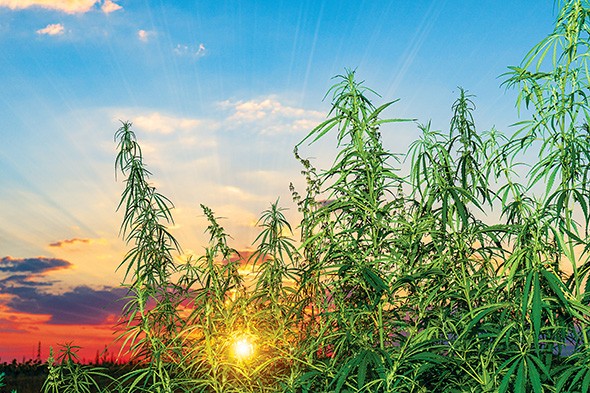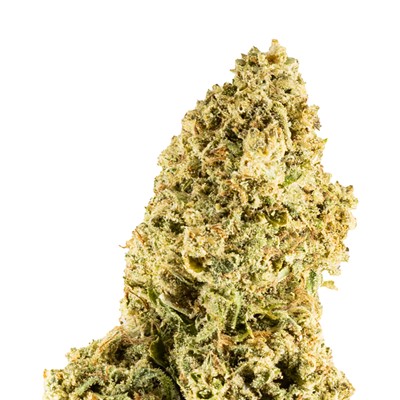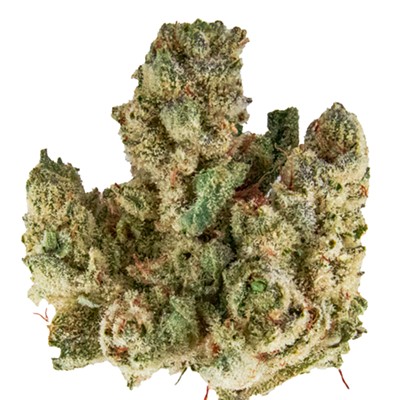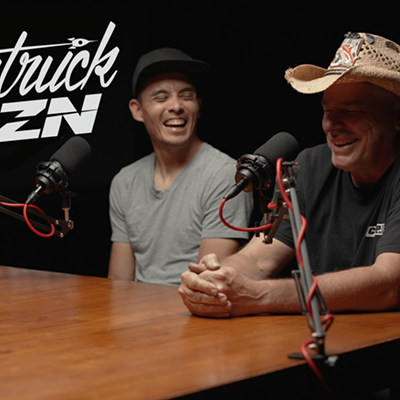Oklahoma has already seen its first freeze, signaling that its first outdoor growing season is at a close.
Under the state’s new medical cannabis law, both commercial growers and patients are allowed to cultivate crops outdoors with a few restrictions.
Predictions for how THC-containing cannabis would fare in Oklahoma’s climate were wildly varied, with some predicting that the volatile severe weather would wreak havoc upon crops, while others pointed out that, according to the U.S. Department of Agriculture’s Plant Hardiness Zone Map, the state would be an ideal location for growing cannabis outdoors.
Natural experimentation
Kimberly Campbell said her two runs of outdoor crops this season fared extremely well and she lost only one of her 12 plants this year.She planted seeds or bought clones of the following strains: Alaskan Thunder Fuck, Blue Flame, Diamonds & Dust, DJ Short Blueberry, GG4, Hemlock, Hindu Kush, Jack Herer, LSD, Maui Wowie and Lemon Larry OG.
“And a wonderful Diesel that I almost threw away because it was just a scrap plant but it turned out to be amazing,” Campbell said. “I started them indoor, and then I brought them out in late April, so when you do that, your daylight times may put them into bloom, which I didn't really know last year, so it was kind of an experiment. You may have to add additional lights like an extra light out in your garden if you're doing outdoors if your light is close to 12 daylight and 12 darkness, so in springtime, it's close to what it is in fall, which is when it promotes the plants to bloom naturally. So next year, I will be adding supplemental lighting in so that I don't go into bloom immediately. I put out my plants in April, and then they started blooming, then the daylight started lengthening and so they started re-veging, so I had flowers on a plant that started to re-veg. … What I did was I just took the flowers off and I just went ahead and re-veged it and let it continue its life naturally just to see what our climate and light and air and microclimate was going to do. I didn’t spray with anything. I wanted to see what kind of plants we were going to have naturally. I wanted one year as not tinkering with it just to see what Oklahoma was going to bring me on a full scale outdoor all year.”
Only one plant — the GG4 — was lost due to bud rot this year. Next year, Campbell plans to spray her crop with a hot pepper spray with essential oils.
“This was a great learning experience because now I know that we've got to somehow battle the fungus and the bud rot,” she said. “That's going to be a thing in Oklahoma, trying to keep bud rot away and the powdery mildew because we've got the humid temperatures.”
Campbell used a planter, pots and the natural soil this year to see how each fared and got the best results with the natural Oklahoma dirt, using only compost tea and no nutrient brands.
“I just harvested the last one right before the freeze, like the day before the freeze, so I pushed it all the way up. … I did that on purpose because the cold weather, I think it produced something extra or at least colorwise they started to turn purple and really pretty colors,” Campbell said.
Experienced grower
Shane Shriver owns both 77 Gardens and 77 Extracts. He grows cannabis, sells clones and concentrates cannabis from many outdoor growers. He got his start in the Michigan and Colorado markets and moved here to start cannabis production in Oklahoma City.“I developed relationships with these outdoor farmers on a large scale in order to take their products in and process them into extracts once they were able to harvest,” Shriver said. “I have a lot of expertise coming from years of doing this, and I expected to see some good and some bad and some ugly, and I definitely saw some of everything. … We also saw a wide variety of issues, whether it was bud rot or grasshoppers or growing in the wrong soil or mites, both spider and Russet mites.
“I ran 100 30-gallon pots outdoor this year under a friend of mine’s license, but I provided all the genetics and ran it started to finish. I also did about 200 10-gallon plants outdoors. Some of them we put out full-term, some of them we put out a little bit late and let them finish late to see how the Oklahoma sun would respond to doing those plants late. We processed them all as live resin extracts and fresh frozen. We pulled a good amount in comparison to what we've seen in Colorado based off those same pots and the same amounts, et cetera, and we're excited to scale based off of the proof of concept that we've seen. In fact, the most important things seem to be that you just get a little bit more dew on your plants here in the mornings, so it's important to either shake them off or have them covered in some ways so you're not getting as much dew on your plants, especially in the last weeks of flower because if you're not getting that morning sunshine, they're just not going to dry them up as quickly and potentially get some bug rot or have to give them a lot more attention and then natural preventative maintenance in the aspect of clearing the area around where you're growing and making sure that you have a fence that potentially stops intruders from coming in, not only people but insects; if you have a fence that can actually stop some of that ground transportation, that's going to have a big effect also. But yeah, it was a wonderful season.”
“I wanted to see what kind of plants
tweet this
we were going to have naturally.”
—Kimberly Campbell
New trimmer
Sara Wallace Boyd is the co-owner of Rock and Rolled Trim Co. They provide trimming services, both by hand and using machines. All of the harvests that they have trimmed for clients this first season were outdoor grows. Wallace Boyd said that they have harvested nearly 1,800 pounds of outdoor flower this season and has seen all manner of quality of outdoor grows.“We've seen some really discouraging grows,” she said. “A lot of people don't care for machine trim. A lot of the newer people, though, are willing to give it a shot, and some of that clearly is because they wanted to hurry and get this harvest done, especially because a lot of was getting burnt up. And I'm sure you saw there was a lot of live plants that really were just burned alive or mold was prevalent in a couple of areas.”
















